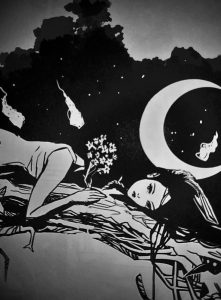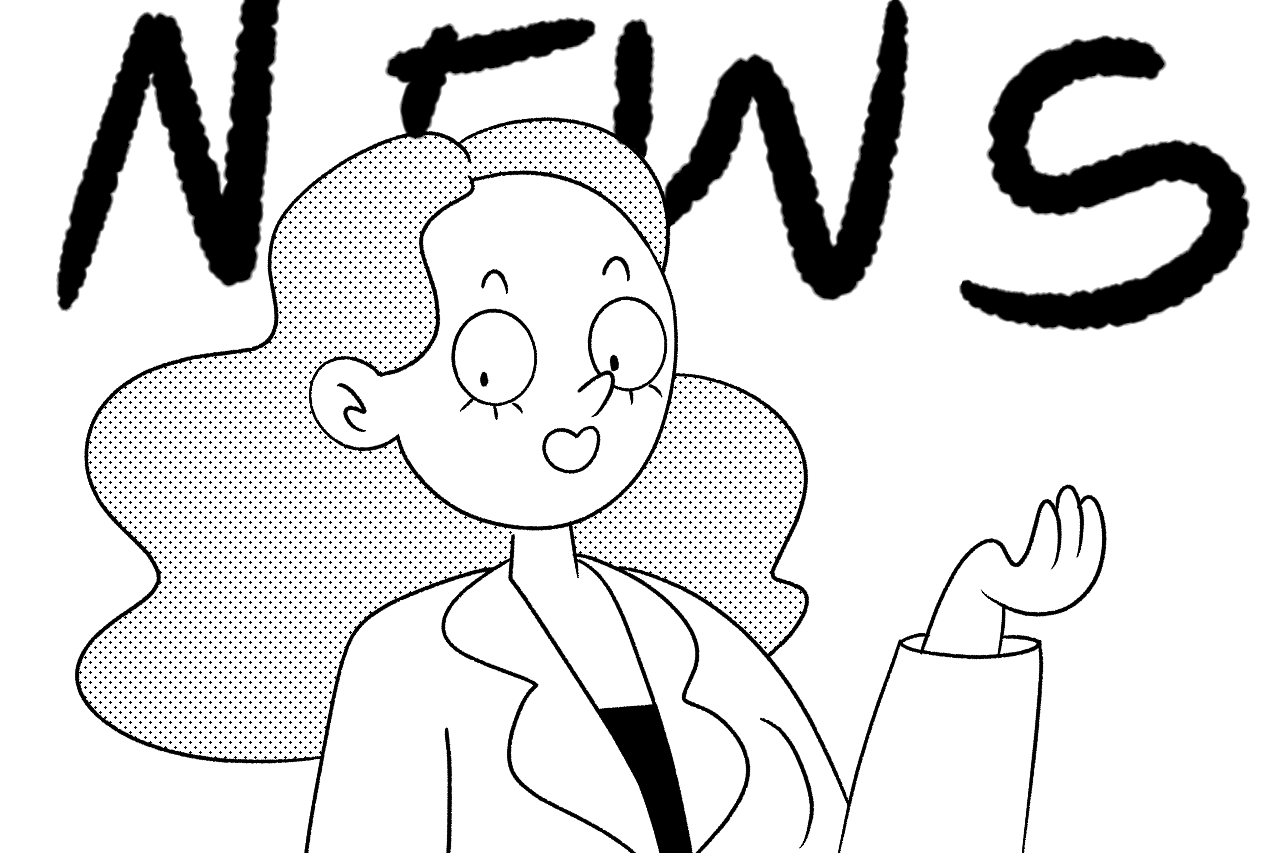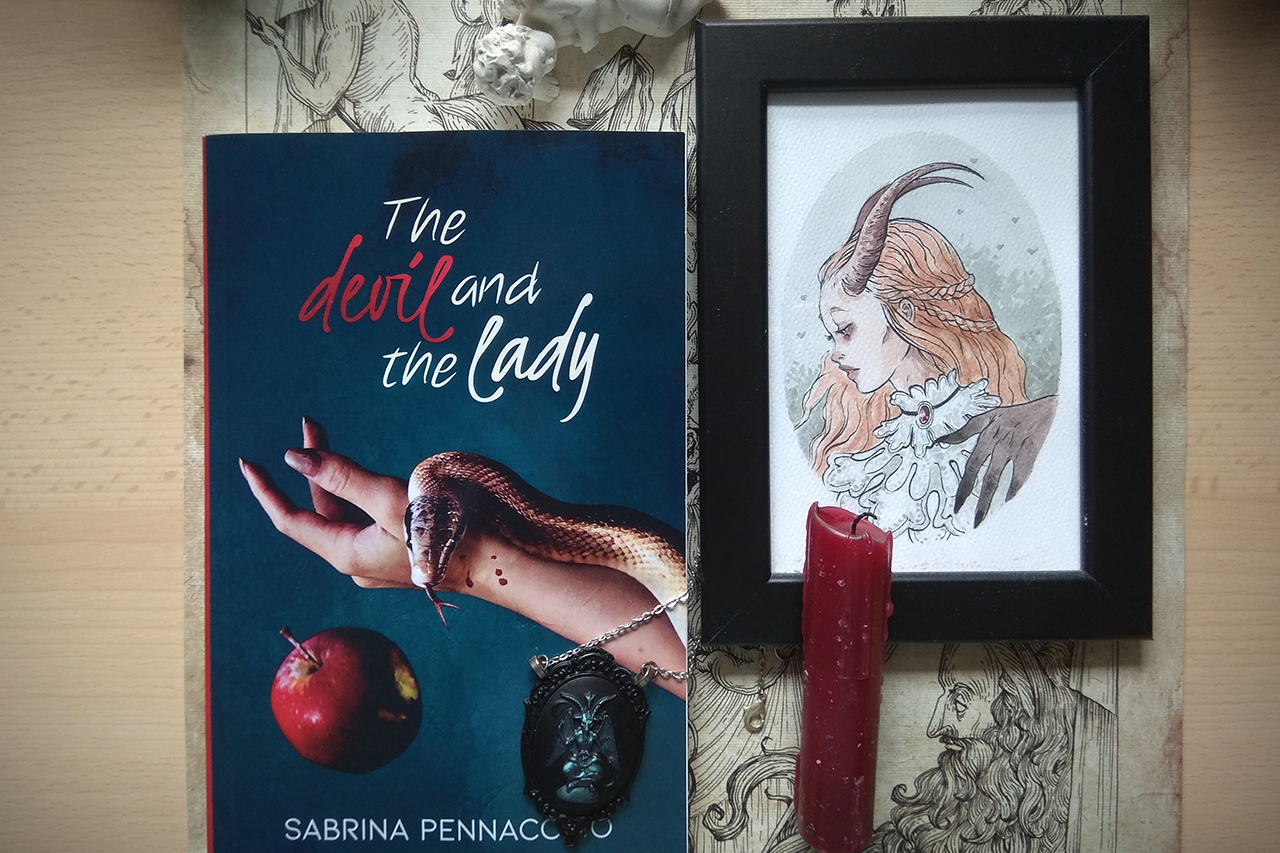We recently discussed Future Fiction‘s first comic book, A Hundred Ghosts Parade Tonight. As we explained, the work is based on a story by Xia Jia and was illustrated by Gabriele Ghirelli, also known as Caelpher. We didn’t miss the opportunity to ask him for a brief interview for our readers.
First of all, welcome and thank you for the time you are dedicating to us. It is a real honor to have you on our pages, and I hope it is equally pleasing for you. The first question is the routine one. Tell us something about yourself, for those of our readers who may not yet know you.
Thank you, and the honor is mutual, Vampire’s Tears. I was truly pleased that you wanted to dedicate an article to one of my latest works that has just hit the market.

For those who do not know me, I am Gabriele Rodrigo Ghirelli Bruzzo, known by the stage name Caelpher. I am (also) an artist in life, more precisely, I am serializing my side as a comic book artist/writer/illustrator, but I am also a great lover of theater, philosophy, and literature in general.
I’m a very curious person, so I have to ask, but you can choose to keep it a secret. How did you come up with your stage name?
Caelpher is a completely made-up name from scratch, both in spelling and phonetics (pronounced kael-fer): I like the idea of having a unique name that only refers to me and my work. As for the meaning of the name for me, allow me to keep a little mystery *smile*.
As a child, I had a dream that if I ever became famous, I would invent names and new terms. How wonderful it would be to hear people pronounce those sounds I created!
Anyway, I came up with this name as a teenager and initially gave it to the character of the storyteller, with whom I certainly have an affinity (although it’s not my favorite, I want to emphasize that!), then I thought that since we both tell stories, I would also use Caelpher as my stage name.
For about four years now, I have also been signing my name with part of my real name, that is Caelpher G. Ghirelli, simply out of respect and a sense of belonging to the real world and to my family.
A Hundred Ghosts Parade Tonight is a work by Chinese author Xia Jia. I read that you are not a stranger to Oriental culture. How was it for you to work on this piece?
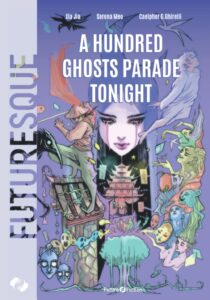
A Hundred Ghosts Parade Tonight
Buy on
Amazon
I studied Eastern culture and had a basic understanding of Chinese language and culture for three years when I was in high school (although I am more familiar with Japanese culture, which I continued to study even after high school, going to Tokyo and Kyoto), and these foundations made it a little easier for me to approach the graphics of this comic book, even just for the writing of basic ideograms.
I also had the small fortune of often having various Chinese ornaments, paintings, and statues in my hands (my grandfather collected them): when I didn’t have graphic inspiration, I simply looked at and interpreted some of these objects in my own way.
However, since the story of “A Hundred Ghosts Parade Tonight” is fantasy/sci-fi in nature, I was precise and culturally realistic in the representation of some of the carnival masks related to Chinese demons and the ideograms. The rest is free graphic interpretation; after all, Xia Jia’s story was pure and melancholic magic imbued with a great sense of abandonment.
I emphasize the word “abandonment“: the story is about a kind of abandoned amusement park that develops along the slate stones of the “Ghost Street”; its inhabitants have bodies of mechanical toys that were supposed to serve as tourist attractions but unfortunately, everything and everyone seems to have been abandoned and left to ruin.
From this, I had fun creating magical but dilapidated environments, such as the temple, the garden, the street itself, and even the background characters who, though real in spirit, carry on a kind of performance every night (their bodies cannot be exposed to sunlight, hence the title “…Parade Tonight”), in memory of the old functionality of the Ghost Street.
For a moment, they reminded me of the life of the lamplighter in the book “The Little Prince’’.
What was the reason that made you actually say yes to this project?
First of all, I read the short story by the Chinese writer Xia Jia and found it worthy, then I was also attracted by the idea of having almost total freedom of graphic interpretation of that world and the characters that inhabit it.
Who is your favorite character? Which one did you enjoy drawing the most?
As for my favorite character, you catch me off guard: I am attached to Ghost Street and its inhabitants almost as if they were a single entity. This very entity I speak of, moreover, is also seen in a dream by the protagonist Ning and has the appearance of a long snake adorned with all the faces of the inhabitants of Ghost Street. I take this opportunity to leave you with one of the descriptive pieces of Xia Jia‘s story that I loved the most (I’m like that, I fixate on details):
“In my dream, I see Ghost Street turning into a long, thin snake. The Old Ghost Tree is the head, Lanruo Temple the tail, the slate slabs the scales. On each scale is drawn the face of a little ghost, very delicate and beautiful.’’
The character that I enjoyed drawing the most was undoubtedly Xiao Qian (for those who don’t know, she’s the oriental girl with the moon hairstyle that I decided to draw centrally with a gaze at the readers on the cover), but in this I am quite obvious*smile*. Usually I love drawing female characters and, for some moment or day, I fall in love with them a little bit, so I am a great lover (also) for all my beloved paper girls *a little ironic*.
You worked on this project together with Serena. What was it like working with her?
Working with Serena Meo was very easy. We found ourselves to be compatible and congenial in communication from the beginning; her script was like a smooth dialogue for me, I read the words and saw the images; from there ink and colors began.
I think Serena did an excellent job in scripting Xia Jia’s story, emphasizing and giving voice to the most touching parts.
I am quite fast at drawing when the script is clear, concise, and well-written.
Are you satisfied with the final impact on the audience?
I believe it is an interesting story and I think my intentionally concise style for this work, fits this story well; like any of my finished works (I mainly speak from a graphic point of view), when I look at it in the present, I say to myself, «I could definitely do better now!»
I want to use the word “satisfied” only for the cover, precisely because I believe I was able to enclose all the elements of the story in an almost concentric and symmetrical play of “transformations and returns.”
I keep all my finished and published works as new starting points, a published work is never an endpoint for me: it remains simply the consolidated base from which to do better and improve in the next evolution and operation.
I would like to emphasize that. When you are working as a designer for publishing houses, there are many other points behind the drawing that may not be visible but that do affect the work: deadlines, compromises with color scales, print tests, etc.
Do you plan to work with Future Fiction again?
Currently, we have no plans but never say never. If there are new stories that I am fond of, I would be happy to work with Future Fiction again. The publishing house deals with vast and interesting multicultural universes and stories.
I know that you are working on various personal projects. I have been following your page for some time and I must admit that I found the comic we discussed there. Would you like to tell us something about these stories?

Illustrazione di Caelpher G. Ghirelli
Disponibile per l’acquisto su
Red Bubble – Etzy
Currently, I have two serious comic projects in the works as a complete author: one is Last Cardinal (probably the story I am most attached to with my favorite character, and this story will be a series and will encompass a whole world where all my invented characters are present) and the other is a graphic novel that tells several short horror stories related to the theme of some historical poisons.
“Il cantastorie e l’equilibrista’’ on the other hand, is currently just a webcomic.
There is also a work that you mentioned that you hope to publish soon in print. Can you tell us something about it, or would you prefer to keep it a secret?
The work that will start first for paper, I hope, will be the collection of stories about poisons that I mentioned earlier. I love creating stories with interesting historical bases and anecdotes, and these stories will be told by the company of itinerant artists (including the storyteller and the tightrope walker): it will be a sort of small Decameron, so to speak (this last project I am carrying out with a colleague).
There are two of your characters that have recently been very successful. I’m talking about the Storyteller and the Tightrope walker. I’m sure there are some readers who want to know more about them.
I have decided to tell you more about these two characters and their company of traveling artists (they live in caravans) after some time. I have no pretensions, for myself, currently, it is a webcomic primarily for myself and then for the audience who wants to listen.
I am quite attached to the two, let’s say that they are part of my “dark side,” especially the part concerning the storyteller.
Their story has been written for years. and now I am inventing how to make you taste it, and, in the end, I have fun with you readers in transporting myself and you to the somewhat sandy and lunar atmospheres of an uncertain world and a love story, perhaps…
Is there a dream in the drawer that you would like to share with us?
My dream in the drawer? I would like to sing some of the songs I have written satisfactorily. I am a great lover of music as a songwriter, and I would like some of my poems (another passion and vice that I have, poetry!) to become music.
We have come to the end of the interview. Thank you again, and I hope you had fun, and maybe in the future, you will come back to us to tell us about other projects that we have mentioned today. A greeting to our readers?
Pleasure mine, Vampire’s Tears. I send a virtual bow to my audience, big or small, and I remind each of you to always support the artists who make you feel emotions.
